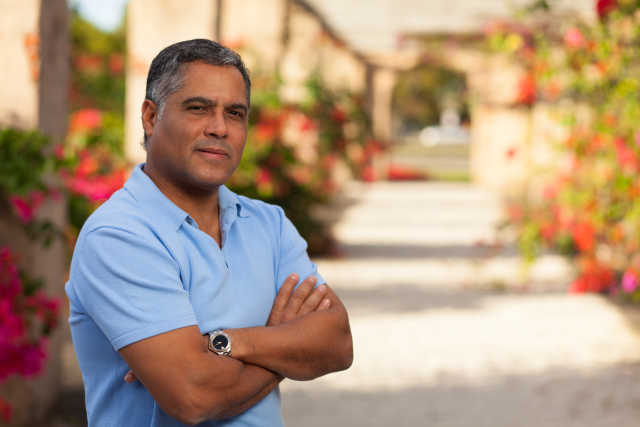Lifestyle
You’re not delusional. Between the COVID-19 pandemic and complex supply chain issues across the globe, there are many reasons to explain the skyrocketing prices of grocery store items, such as coffee, butter, and sugar. Learn the reasons behind this cost shift as well as some strategies to save money, even during precarious financial times.

C.E Larusso
•
Published October 4th, 2022
Table of Contents
Key Takeaways
Common items like breakfast cereal, wheat and milk have all seen sharp increases due to inflation and other issues in the supply chain.
COVID-19, global supply chain issues and war in Ukraine have caused the cost of many grocery items to rise
There's no end to inflation in sight, with many economists predicting everyday Americans won't see relief until 2023 at the earliest.
You’re not delusional. Between the COVID-19 pandemic and complex supply chain issues across the globe, there are many reasons to explain the skyrocketing prices of grocery store items, such as coffee, butter, and sugar. Learn the reasons behind this cost shift as well as some strategies to save money, even during precarious financial times.
Why Food Prices Have Gone Up This Year
Year-to-year, from June 2021 to June 2022, the prices of grocery items have jumped over 10%, according to the Bureau of Labor Statistics. There are several factors driving this inflation, including:
The COVID-19 Pandemic
The processes of producing and distributing food items, and many other goods, were completely upended during the last few years of the Coronavirus pandemic. Restaurants shuttered due to lack of business, while some converted to hybrid take-out and grocery store operations. During this time, consumer demand changed, too, with people ordering more shelf-stable items in order to take fewer trips to the grocery store—a change the market was not prepared for.
In addition, the movement of food items was heavily restricted by nearly every country, delaying and increasing costs along the supply chain. Due to the pandemic’s widespread nature and high transmissibility, there was a worker shortage in nearly every sector, affecting livestock production, harvesting, and more.
Higher Energy Costs
Many Western countries have placed sanctions on Russian goods, including oil and gas, which has sent energy prices soaring. Because energy is required to produce every kind of commodity and deliver it to consumers, rising energy prices typically raise the costs of everything. Food is particularly sensitive, since many foods that Americans expect to find in grocery stores must be transported over great distances.
Conflict in Ukraine
The war in Ukraine may seem geographically far away, but its effects are very much felt in the United States. Russia and Ukraine together supply 30% of the world’s wheat, and it goes without saying that Ukraine is not currently in the best position to be producing and exporting wheat right now. In fact, its cargo exports have decreased over 90% in the last year. Many grocery items are impacted by a wheat shortage, including flour, pasta, and cereal.
Climate Change
Extreme heat, floods, and more are causing increasingly precarious conditions for farmers all around the globe, with several yielding much smaller crops than anticipated.
These Food Prices are Up Since Last Year
You might want to know which grocery items have seen the largest price increase. Here’s a handy chart to give you a sense of the shift over the last year.
| Food Item | May to June 2022 Increase | June 2021 to June 2022 Increase |
|---|---|---|
| Breakfast Cereal | 5.5% | 19.2% |
| Flour | 2.5% | 15.1% |
| Ham | 3.4% | 9.6% |
| Chicken | 1.7% | 18.6% |
| Eggs | .3% | 33.1% |
| Milk | .5% | 16.4% |
| Lettuce | .3% | 11.4% |
| Coffee | .9% | 15.8% |
| Sugar | 1.6% | 11.4% |
| Butter | 3.7% | 26.3% |
| Baby Food | 1.1% | 14% |
*All data courtesy of the Bureau of Labor Statistics
Questions about inflation and retirement? We're here to help.
Schedule your FREE Retirable consultation today.When Will Food Prices Go Back Down?
Unfortunately, most experts think that the peak has not come yet, so expect your supermarket tab to inch a little higher in the near term. Some believe relief should arrive in 2023; many financial analysts note that other countries, such as Australia, are set to have bumper wheat crops this year which will help compensate for Ukraine. In addition, the dollar is worth more than it has been in over two decades, contributing to a general fall in agricultural commodity pricing. That said, there’s no guarantee of lower prices, as factors such as the cost of fertilizer—driven by the cost of gas—and possible extreme weather, such as La Niña, could keep prices high or even higher for the foreseeable future.
How to Save on Groceries
While you’re waiting for grocery prices to drop and stabilize, there are a few strategies you can employ to keep your supermarket total as low as possible.
Budget and Plan Each Week
Plan your weekly meals in advance, and make a smart grocery shopping list that only includes the items you need for your meals. Make sure to keep an itemized list of what you have in stock in your pantry so you don’t buy duplicates of anything, and use what you have before you buy more.
Buy in Bulk
Warehouse stores such as Sam’s Club and Costco require a yearly membership fee, but if you shop at these stores regularly—and strategically—you’ll save money in the long run. Just be sure to purchase items that won’t go bad before you have time to use them; if your family can’t get through two dozen bananas in a week, skip that bulk purchase. However, shelf-stable items such as peanut butter and various oils are great ones to purchase from Sam’s Club or Costco, as are frozen foods.
Use Rewards Cards and Cash Back Credit Cards
Many grocery stores offer rewards cards to thank you for your loyalty to their shop. Many of these rewards cards are free, and gain you access to perks like special discounts, free delivery services, and more. There are also credit cards—some with introductory 0% APR offers—that have up to 6% cash back for grocery store charges. Just be sure to pay the balance in full each month after the introductory promotional period ends so you don’t pay interest fees.
Shop for Store Brands
Instead of buying name brand groceries, opt for the grocery store version, which is usually much cheaper—sometimes by as much as 50%.
Go Vegetarian
The price for meat is on the rise, so swap out chicken, pork, and beef for more wallet-friendly proteins like beans, eggs, and lentils. It’s a choice that’s not only good for your budget, but good for your body and the environment.
Final Thoughts
It’s unpleasant seeing a supermarket bill jump month after month, but with some careful planning, you can weather this storm and possibly learn some long-term strategies for saving money on food and, ideally, having more for retirement.
Share this advice

A professional content writer, C.E. Larusso has written about all things home, finance, family, and wellness for a variety of publications, including Angi, HomeLight, Noodle, and Mimi. She is based in Los Angeles.
Share this advice

A professional content writer, C.E. Larusso has written about all things home, finance, family, and wellness for a variety of publications, including Angi, HomeLight, Noodle, and Mimi. She is based in Los Angeles.
Free Retirement Consultation
Still have questions about how to properly plan for retirement? Speak with a licensed fiduciary for free.




